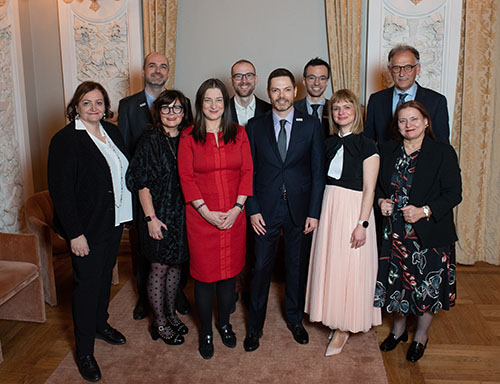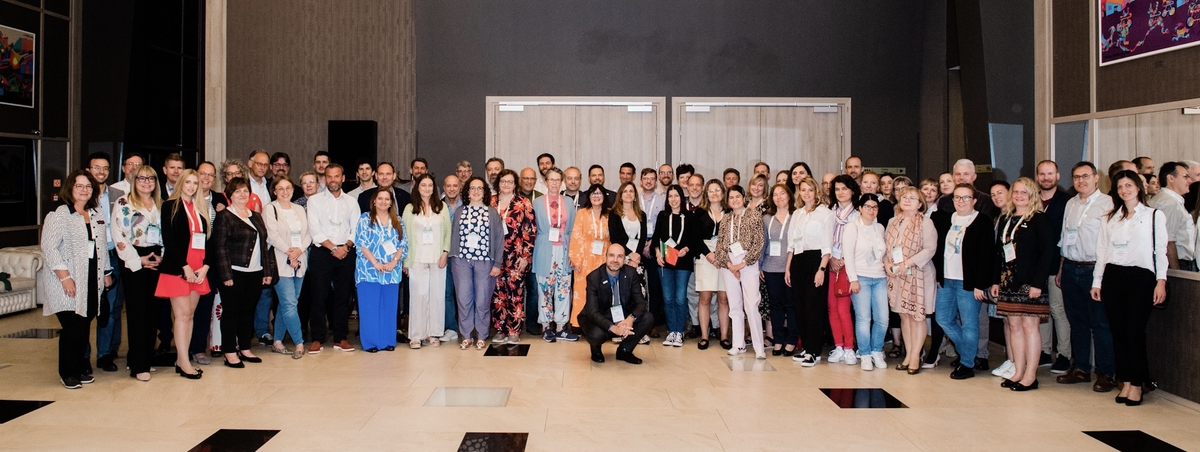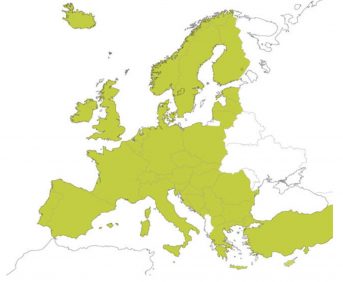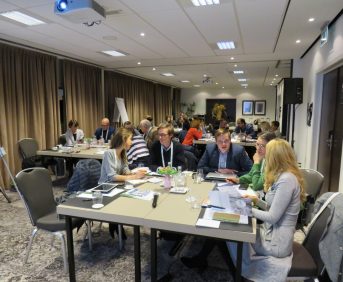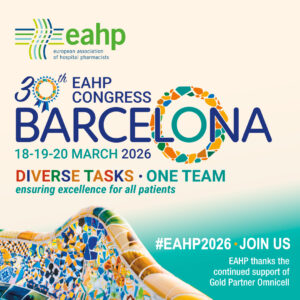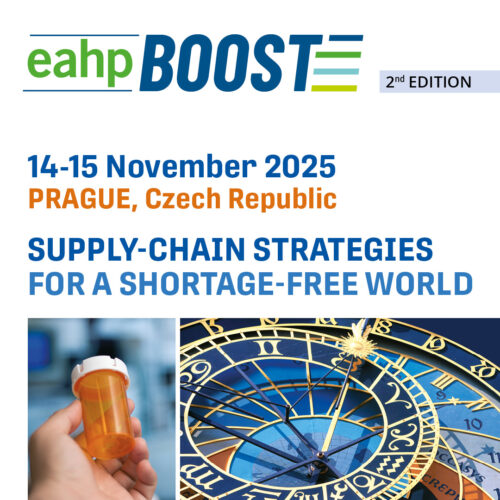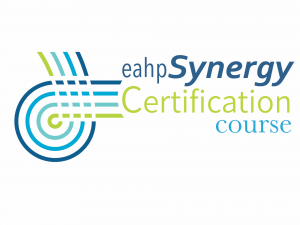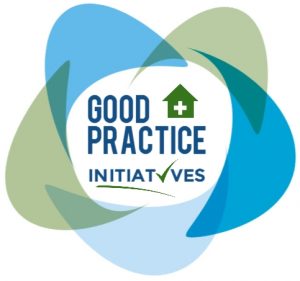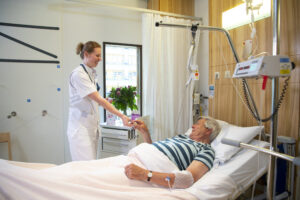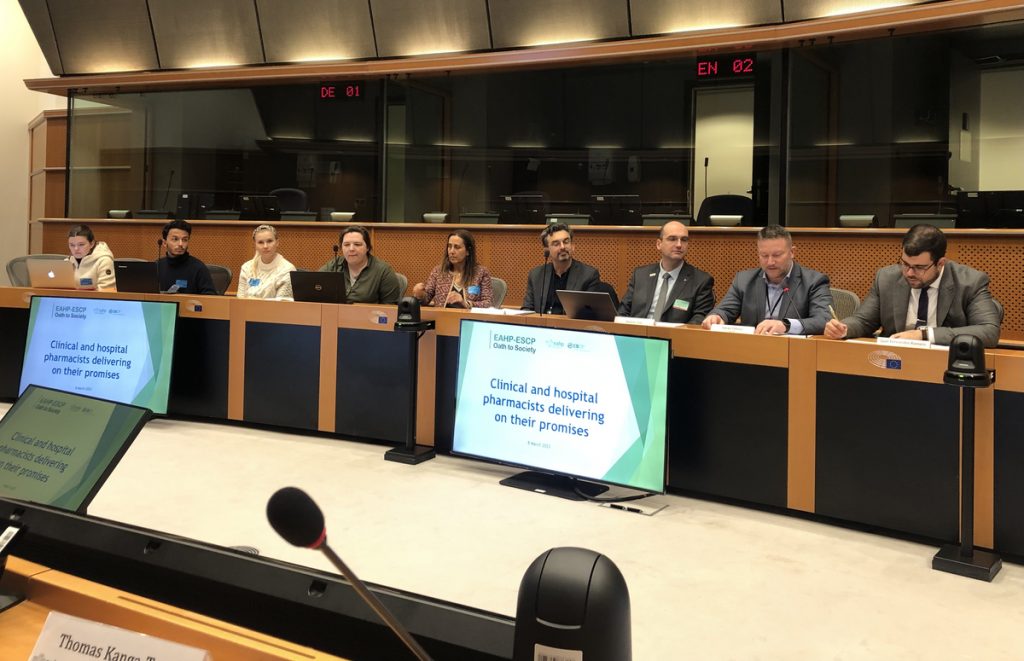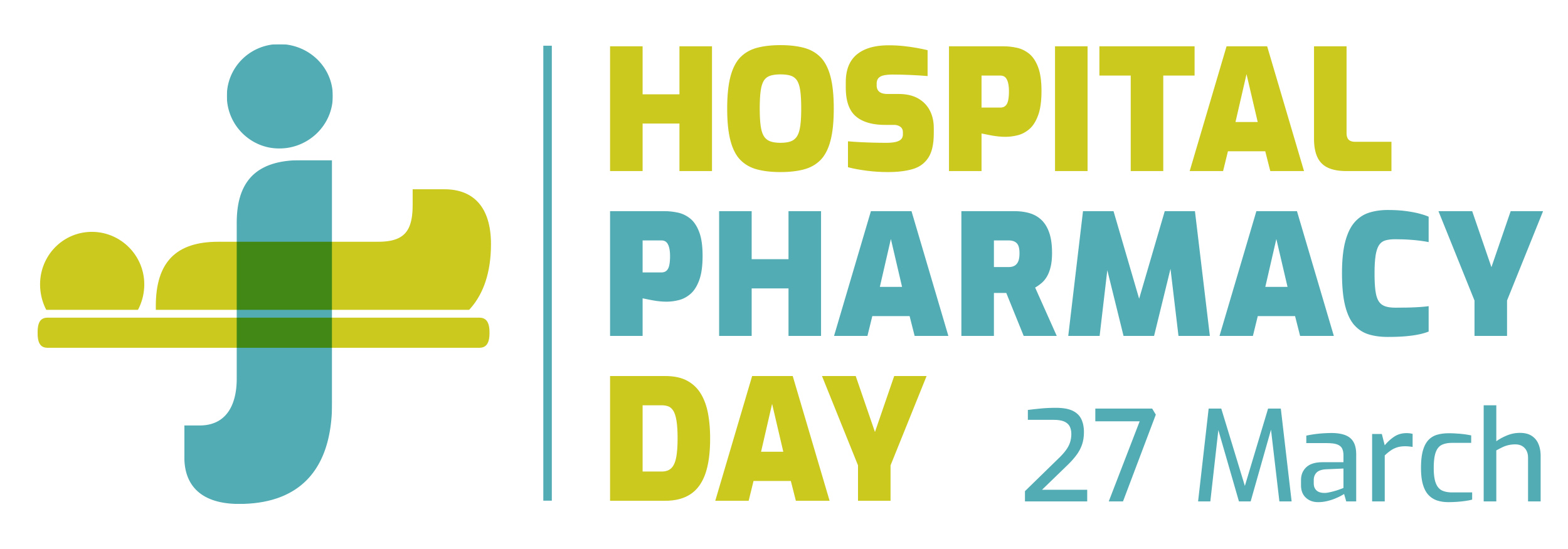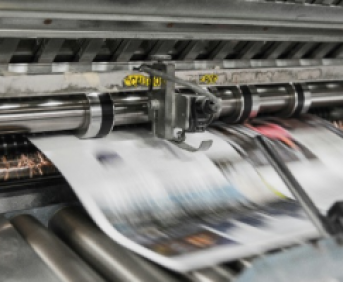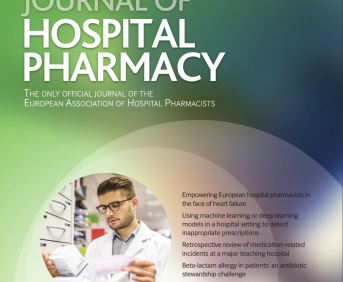COST SAVINGS ASSOCIATED WITH EMICIZUMAB REPACKAGING IN PEDIATRIC PATIENTS WITH HEMOPHILIA A
Pdf

European Statement
Production and Compounding
Author(s)
Saldaña Soria Raquel, Florit Sánchez María, Yunquera Romero Lucía, Fernández Martín Jesús, Gallego Fernández Carmen, Tortajada Goitia Begoña
Why was it done?
The aim of this protocol is to evaluate and quantify the cost saving of the optimisation of the use of emicizumab vials through repackaging into syringe under aseptic conditions.
What was done?
Emicizumab is indicated for routine prophylaxis of bleeding episodes in patients with hemophilia A. This drug has a significant economic impact, so it has been decided to initiate a protocol for the use of emicizumab in which it has been established to group patients and dispense pre-filled syringes of repackaged emicizumab for each patient, dividing the vials according to the patient’s dose in the syringes as a savings strategy.
How was it done?
Two male patients, aged 4 and 5 years, with hemophilia A, have been treated with emicizumab in our hospital from February 2022 to September 2024. A protocol was implemented consisting of dispensing repackaged pre-filled syringes of emicizumab (expiry date 7 days according to the Good Practice Guide for the preparation of medicines) to each patient, grouping the patients receiving treatment with emicizumab on the same day for dispensing and dividing the vial into syringes to adjust it to the recommended dose according to the Technical Data Sheet in a laminar flow cabinet.
What has been achieved?
This treatment would have cost 337.125,95€ from February 2022 to September 2024. However, since patients (grouped on the same day of the week) were dispensed repackaged emicizumab pre-filled syringes and emicizumab repackaging was performed under aseptic conditions, the total cost has been 168.562,98€. Therefore the cost savings would be 168.562,98€ (63.211,12 €/year).
In conclusion, this new way of working can allow us to save 63.211,12€ (43 vials of 30 mg) every year. For this reason, the repackaging could represent a significant economic saving in patients with hemophilia A, while contributing to maintaining the sustainability of the national health system.
What next?
We hope to include all patients from our hospital in the emicizumab optimization protocol to continue contributing to the sustainability of the national health system.
STOCK PRODUCTION OF INTRAVITREAL SYRINGES OF BEVACIZUMAB RANIBIZUMAB AND AFLIBERCEPT
Pdf

European Statement
Production and Compounding
Author(s)
MC. SÁNCHEZ ARGAIZ, A. TRUJILLANO RUIZ (presenting author) , M. GALLEGO GALISTEO, A. VILLA RUBIO, E. CAMPOS DÁVILA
Why was it done?
Weekly consultations are held for the administration of intravitreal injections, serving around 50 patients per week. To optimize preparation and ensure efficient use of vials, we implemented a system to repackage pre-filled syringes, taking advantage of the drugs’ physico-chemical stability for up to 28 days. This centralized process, handled by the hospital pharmacy, follows Good Manufacturing Practices (GMP) for sterile medicines, ensuring quality and efficiency.
What was done?
We established a production process to repackage intravitreal anti-vascular endothelial growth factor (anti-VEGF) drugs, specifically bevacizumab, ranibizumab, and aflibercept, for use in ophthalmic treatments such as age-related macular degeneration (AMD), retinal vein occlusion (RVO), and diabetic macular edema (DME).
How was it done?
The preparation process for intravitreal injections was reviewed to improve batch traceability. A literature review was conducted on the physicochemical and microbiological stability of bevacizumab, ranibizumab, and aflibercept. Based on the GMP risk matrix, intravitreal injections were classified as high-risk. Batch preparation protocols were developed for these three drugs, and microbiological control measures were put in place to ensure aseptic handling and product quality. All processes were validated according to regulatory standards, including environmental, instrumental, and maintenance controls.
What has been achieved?
By standardizing batch protocols for bevacizumab, ranibizumab, and aflibercept, we have significantly reduced the weekly workload and optimized the use of anti-VEGF vials. We strictly follow national guidelines for validating aseptic techniques in intravitreal preparation and have thoroughly trained our technical staff.
What next?
This practice is recommended for broader implementation in hospital settings, as it provides significant cost savings while maintaining high-quality and safe treatments for patients. Looking forward, we aim to expand this approach to include emerging therapies such as faricimab, ensuring that our repackaging protocols can adapt to new treatments as they become available, maintaining both efficiency and patient safety in line with evolving clinical practices.
DEVELOPMENT AND IMPLEMENTATION OF A POST-AUDIT IMPROVEMENT PLAN IN A PARENTERAL NUTRITION PRODUCTION UNIT
Pdf

European Statement
Production and Compounding
Author(s)
F. Gaume, A. Ifrah, S. Vrignaud
Why was it done?
In 2023, an evaluation of professional practices (EPP) targeting the risk of microbiological contamination was carried out in our parenteral nutrition production unit. This EPP took the form of an internal observational practice audit and revealed several non-conformities (compliance with disinfectant exposure time, identification of right times for change gloves and performance of surface sampling) requiring the implementation of a structured and collaborative improvement plan.
What was done?
From January to October 2024, an improvement plan in 3 phases has been performed.
How was it done?
Phase 1 – Audit results: Presentation to unit technicians by pharmacists, followed by a discussion session.
Phase 2 – Development of improvement actions: Brainstorming sessions with the team to generate ideas for corrective actions / Evaluation of proposals collected according to 6 criteria (speed, relevance, feasibility, motivation, safety and cost) using an impact matrix / Creation of a structured action plan based on the selected proposals.
Phase 3 – Implementation of actions: Creation of working groups / Monitoring of the improvement process / Development of a plan to assess the effectiveness of actions.
What has been achieved?
Phase 1 – Audit results presentation: 2 sessions were held in January 2024 with the 13 technicians of the unit. The discussions allowed us to discuss the non-conformities observed during the audit and ensured understanding of the challenges identified.
Phase 2 – Development of improvement actions: 2 sessions were held in March 2024 /10 improvement actions were listed and evaluated. 4 actions were considered as priority, 4 as recommended and 2 as non-priority / Setting up of a Gantt chart to give an overview of the actions to be carried out, their estimated duration and deadlines.
Phase 3 – Implementation of actions: implementation of the 4 priority actions and the 4 recommended actions / Creation of a quality document concerning glove changes and modification of 8 quality documents / Consideration of ways of evaluating actions: quick audit, questionnaire, etc.
What next?
As a follow-up to this work, a questionnaire will be prepared for the technicians to assess the overall approach. A quick audit focusing on glove changes will be introduced soon to assess the impact of the improvement plan.
Intrahospital circuit of autologous eye drops
European Statement
Patient Safety and Quality Assurance
Why was it done?
The number of patients treated with autologous eye drops has increased significantly in recent years, which has led to the need to create an intra-hospital circuit to ensure the traceability of samples throughout the extraction, processing and dispensing process.
What was done?
Create a circuit to ensure traceability of the patient’s plasma at all times, thus avoiding any confusion.
How was it done?
In order to avoid the transport of samples by patients and consequently the loss of samples or possible errors, the following circuit was developed:
– The extraction and centrifugation of the patient’s blood is agreed with the Biochemistry Service, the orderly is in charge of taking it to the pharmacotechnics laboratory, in the Pharmacy Service, where the time of delivery will be noted.
– If the plasma arrives before 12:00 noon, the patient will be called late in the morning for dispensing. If the delivery is later, it will be scheduled for the following day.
– The eye drops are then prepared.
– Finally, they are dispensed directly from the laboratory by the pharmacists or by the technicians trained for this purpose, always under the supervision of the pharmacist responsible for the area. Traceability is maintained throughout the entire process.
To make everything possible, several training meetings had to be held with Bioquimica.
What has been achieved?
Since the implementation of this circuit at the beginning of 2023, 166 batches of autologous eye drops have been produced for 72 patients, with only one error recorded, where a plasma that was not correctly identified was delivered and discarded.
In addition, the waiting time for dispensing the preparation was reduced by 33%, from 30 minutes to less than 10 minutes, thus achieving greater patient satisfaction.
What next?
The application of this circuit prevents samples from being transported by the patient, avoiding any type of accident, as well as ensuring the correct traceability of the samples. On the other hand, patient waiting times are reduced by dispensing samples directly from the laboratory area, thus avoiding waiting times for consultations.
The pharmaceutical approach to the processing of donor human milk in a human milk bank
Pdf

European Statement
Production and Compounding
Author(s)
Susana Fraga, Cláudia Cunha, Susana Pissarra , Carla Sampaio, Diana Silva, Pedro Soares, Teresa Soares, Renata Barbosa
Why was it done?
Human milk banks (HMBs) must use rigorous quality assurance practices to protect infants and milk processing, and post-pasteurization procedures are important in maintaining high-quality breast milk and safeguarding its quality.
The compounding pharmacist has all the knowledge and experience needed to implement processing circuits based on good handling practices and sterile technique, combined with quality assurance procedures to ensure their safety.
What was done?
Pharmacy implementation of the Donor Human Milk (DHM) processing circuit (by pasteurization) and conditions.
How was it done?
Bibliographical research and critical analysis of the functioning of HMB worldwide, with multidisciplinary meetings to define the best and most secure quality practices.
Equipment choice, in accordance with recommendations and assessment of their technical requirements.
Adaptation of the informatic medical integrated system to the DHM prescription, processing, quality control and dispensing circuit.
Design of the DHM circuit based on good practices for the safe use of products of human origin and on a robust quality assurance plan.
What has been achieved?
A DHM circuit was put into practice, with pharmacist intervention in DHM processing, quality control, and batch release.
Procedures for aseptic handling, quality control with check points and risk analysis, packaging, and labelling of DHM were outlined.
Work instructions were also established for handling equipment (pasteuriser, bottle sealer, laminar flow chamber) as well as procedures for cleaning facilities and material/equipment, with training sessions for the professionals involved.
The multidisciplinary circuit was adapted to the organisational management of the Neonatal Intensive Care Unit (NICU), HMB, and Pharmaceutical Services, certified on 18 April 2023 according to ISO 9001:2015 recommendations.
Guidelines for the correct use of equipment in accordance with its recommendations and technical requirements were established.
What next?
Opening more HMB worldwide is an inevitability. Prevailing know how at the level of hospital pharmacies represent several advantages to these projects, based on experience and expertise in manipulating biological products and maintaining a controlled circuit based on safety and quality standards.
The development of hospital manufactured ready-to-use cefazolin 100 mg/mL injections
Pdf

European Statement
Production and Compounding
Author(s)
Bojan Žagar, Matej Vehovc, Mateja Tršan, Blaž Vehar
Why was it done?
Cefazolin injection 100 mg/mL is a sterile pharmaceutical formulation comprising cefazolin sodium and water for injections. Traditionally, cefazolin injections were prepared on hospital wards by reconstituting cefazolin sodium powder for injections with water for injections and subsequent dilution before intravenous administration.
What was done?
Establish a semi-automatic aseptic preparation process, ensure the production of final products that meet quality standards, develop analytical methodologies for in-process and final product quality control, ensure the reliability and validity of test results, and conduct a stability study to confirm long-term storage.
How was it done?
Product materials include: Pharmacy Bulk Package of Cefazolin for Injection, USP, water for injections, Luer Lock 20 mL sterile polypropylene syringes, steribags. Product is prepared with aseptic technique within a laminar flow unit situated in a pharmaceutical cleanroom. Bulk package is connected to a dispensing device, followed by reconstitution with water for injections. In-process samples are collected and volume-adjusted based on density. Following the preparation and dispensing, syringes undergo labeling and packaging into steribags. They are then promptly stored at -30°C within 4 hours. Final product samples are obtained and analysed (pH value, cefazolin content, endotoxins, sterility) prior to product release.
What has been achieved?
Preparation of cefazolin sodium injections in a controlled, aseptic environment utilizing pre-prepared bags containing the appropriate cefazolin concentration (100 mg/mL) has successfully addressed critical concerns surrounding the safety, efficacy, and quality of these pharmaceuticals when administered on hospital wards. Challenges related to stability and shelf life are being addressed with the storage approach at -30°C within the pharmacy, followed by a carefully monitored transition to ward storage at 5°C for up to 28 days, and subsequent patient administration at room temperature within 2 days.
What next?
This approach not only streamlines the process but also safeguards the well-being of patients, marking a significant advancement in pharmaceutical preparation within our healthcare setting. We are conducting an ICH-compliant stability study with the objective of establishing a combined shelf life of 90 days at -30°C, followed by 28 days at 5°C, and an additional 2 days at room temperature.
The role of hospital pharmacists in gene therapy preparation
Pdf

European Statement
Production and Compounding
Author(s)
Lucija Tominović Gjivić, Gabrijela Kos, Anita Šimić
Why was it done?
In order to ensure correct use of voretigene neparvovec and minimise the risks associated with its administration, the product can be distributed only through treatment centres where qualified staff (vitreoretinal surgeons and pharmacists) have participated in the mandatory risk management plan (RMP) education program required by EMA.
Since voretigene neparvovec has to be transported and stored frozen at ≤-65 ºC, has short shelf life after dilution (4 hours), contains genetically modified organisms and must be handled according to local biosafety guidelines, there was a need for establishing standard operating procedures (SOPs) for each step of the treatment process.
What was done?
The University Eye Clinic, University Hospital Sveti Duh in Zagreb, Croatia, was designated as the world’s 6th gene therapy centre in 2020.
Hospital pharmacists, as part of a multidisciplinary team, play an important role in preparation and administration of the gene therapy product voretigene neparvovec which is indicated for the treatment of patients with vision loss due to inherited retinal dystrophy caused by biallelic RPE65 (retinal pigment epithelium-specific 65 kilodalton protein) mutations.
How was it done?
The multidisciplinary team consists of a paediatric ophthalmologist, an inherited retinal disease specialist, retinal surgeons, pharmacists and nurses.
SOPs were created for: ordering process, storage of the product, coordination between members of the multidisciplinary team, preparation of the product, administration and disposal of waste.
Preparation of voretigene neparvovec is performed under aseptic conditions in a Class II vertical laminar flow biological safety cabinet (BSC) according to Pharmacy Manual which was ensured by the manufacturer.
What has been achieved?
Since 2020. there had been 47 dose applications of voretigene neparvovec (26 patients, Croatian and nonCroatian citizens).
The prevalence of inherited retinal dystrophy associated with biallelic RPE65 mutation is 1:200 000 and it is expected that there are 19 individuals (population of 3,8, million) with biallelic RPE65 mutation in Croatia, and 13 of them were detected since 2020.
There were no registered side effects which could be associated with errors during the preparation or administration of voretigene neparvovec.
What next?
With the increasing number of gene and cell-based therapies, the need for continuous education of hospital pharmacists and exchange their experiences is greater than ever.
Evaluation of tetracosactide peptide in galenic formulations for rapid adrenocorticotrophic hormone stimulation test
Pdf

European Statement
Production and Compounding
Author(s)
Aleksandra Bračko, Janez Ilaš
Why was it done?
The rapid adrenocorticotrophic hormone (ACTH) stimulation test is a commonly performed test in all hospital departments of the University Medical Centre Maribor. The reason for its widespread use lies in its simple execution using a pre-filled syringe containing precisely 1 µg of tetracosactide solution. Until the year 2016, we prepared a 5 ml solution with a concentration of 5 µg/ml in glass vials. Based on a literature data we set a shelf life of three months from the date of production for the solution filled in plastic syringe. The solution in glass vials has a shelf life of four months. We wanted to confirm this shelf-life with several analytical methods.
What was done?
The aim of our work was the qualitative and quantitative evaluation of tetracosactide peptide in a solution with a concentration of 5 µg/ml, filled in glass and plastic containers and stored under different conditions, using multiple methods. We stored the sample solution of tetracosactide for five months under various conditions. We performed the analysis using the Qubit 4 fluorometer, the Bradford method and method based on ultra-high-performance liquid chromatography coupled to high-resolution mass spectrometry (UHPLC–HRMS).
How was it done?
The first two relatively simple methods, Qubit 4 fluorometer, the Bradford method, did not provide the desired results. We assume that these methods were not sensitive enough for our sample with a concentration of 5 µg/ml. In the end, we used the UHPLC-HRMS analysis, which proved to be sensitive and highly selective.
What has been achieved?
The peptide molecule has eight basic centers in its structure, so both tetracosactide and each impurity were differently charged in an acidic medium, specifically +3, +4, +5, +6, +7, and +8. The distribution of charge of tetracosactide and impurities among the samples is very similar, with the highest proportion represented by molecules with a charge of +6. We have identified 11 impurities. The highest proportion was represented by impurity with the increased mass of 16 Da (tetracosactide sulfoxide). HPLC-HRMS method is highly selective and allows identification of each impurity
What next?
Based on the findings we will validate a method for quantification of the selected impurities which will allow us to perform the stability study of according to the ICH guidelines.
Preparation of monoclonal antibodies on the pharmacy benchtop – risk assessment and practical considerations
Pdf

European Statement
Production and Compounding
Author(s)
Aidan Morris, Louise Byrne
Why was it done?
• mAbs were considered hazardous if handled by staff – prepared in a dedicated isolator in the PAU in TUH.
• No widely accepted standards for safe handling of mAbs, although more recent guidance allows preparation of some mAbs outside of PAUs once risks appropriately assessed.
• Significant reduction in production capacity in the PAU in early 2022 for planned repair work. Benchtop preparation of mAbs implemented to maintain patients’ treatment regimens and to reduce costs associated with outsourcing.
What was done?
• Preparation of monoclonal antibodies (mAbs) on the pharmacy benchtop temporarily introduced in the Pharmacy Aseptic Unit (PAU) of Tallaght University Hospital (TUH).
• Guidance from Ireland’s National Cancer Control Programme (NCCP) on Pharmacy Benchtop Preparation of mAbs reviewed and implemented.
• Risk assessment carried out for individual mAbs. List of mAbs suitable for benchtop preparation prepared.
How was it done?
• Implementation of the NCCP guidance on Pharmacy Benchtop Preparation of mAbs. Advice on risk assessments and safety, equipment and facilities, and staffing and training when preparing mAbs on the benchtop.
• Literature review of the hazards associated with handling mAbs – toxicity, immunogenicity, risk reduction measures. Individual mAbs assessed for suitability for benchtop preparation using Health Service Executive (HSE) risk assessment tool. This considered toxicity, immunogenicity and closed system transfer device (CSTD)-compatibility of mAbs, and personal protective equipment required.
• CSTD vial adaptor based on air cleaning (filter) technology replaced with vial adaptor with physical barrier (balloon) – additional safety measure. Dedicated area assigned for benchtop preparation – well-ventilated, clutter-free and easy-to-clean.
• Additional training on new vial adaptor provided to pharmacy technicians already experienced in aseptic compounding.
What has been achieved?
• List of mAbs suitable for benchtop preparation prepared. Conjugated antibody-drug complexes, mAbs of fully murine origin and mAbs not CSTD-compatible deemed unsuitable.
• mAbs prepared on the benchtop during period of reduced capacity, maintaining patients’ treatment regimens and reducing outsourcing costs, wastage.
• Facilitated by risk assessment and risk reduction using PPE, training and CSTDs.
What next?
• Although safety and handling requirements of mAbs not fully known, prudent to handle them with more care than most drugs but less than for cytotoxics.
• Contingency plan for benchtop preparation of mAbs in case of future reduced PAU capacity.
• Can be applied to other organisations experiencing periods of reduced capacity.
Sustainability initiative: dose banding of paclitaxel to minimise drug waste
Pdf

European Statement
Production and Compounding
Author(s)
Peder Nygard, Helle-Brit Fiebrich-Westra, Elise Smolders
Why was it done?
The aim of this project was to reduce paclitaxel waste caused by cancellation of administrations. Standardised dose bands make interchangeability of already reconstituted paclitaxel bags easier, as more patients use the same dose. This could potentially save drug- and material waste and costs even as manpower.
What was done?
Paclitaxel fixed dose bands were created for patients treated with a weekly dose of 80 mg/m2.
How was it done?
In consultation with prescribers the dose bands for paclitaxel where created (see table). These dosages were implemented as a dose-rounding rules in the drug preparation software (Hix 6.2, ChipSoft BV). The maximum deviation for dose-rounding rules for paclitaxel in our hospital is 10% of the prescribed dose. Dosage ≤72mg or >200mg were rounded as normal.
Prescribed dose (mg) Dose-band (mg) m2 (dose 80 mg/m2
>72 ≤88 78 1.0
>88 ≤102 96 1.2
>102 ≤116 114 1.4
>116 ≤136 126 1.6
>136 ≤152 144 1.8
>152 ≤168 162 2.0
>168 ≤184 174 2.2
>184 ≤200 192 2.4
What has been achieved?
These rules were implemented in April 2022. Data from 1 May 2022 to 31 August 2022 is compared with the same time period in 2021. In 2022, a total of 729 infusions where prepared compared with 872 infusions in 2021.
In this 4 month time period in 2022 a total of 14 different dosages were prescribed, compared with 24 in the same time period in 2021. Additionally, interchangeability was improved as the top 3 dosages prepared by the pharmacy were: 144 mg (36%), 162 mg (22%), and 126 mg (19%) compared with 144 mg (17%), 138 mg (14%), and 126 mg (10%) in 2021.
Furthermore, in 2021 we discarded 33 prepared dosages of paclitaxel of which three infusions could be reused. Compared to 13 discarded dosages in 2022 of which eight were reused giving a reduction of 25 infusions less waste (83% reduction, savings ~2500 euros).
What next?
Pharmacists need to be instructed to adapt these rounding rules, which must decrease the variation in dosages and thus waste. Secondly, this project will be monitored the upcoming year and evaluated together with prescribers. The aim is to implement dose bands for paclitaxel dosages 175 mg/m2 and other chemotherapeutic drugs (eg, oxaliplatin, docetaxel, cyclophosphamide).
